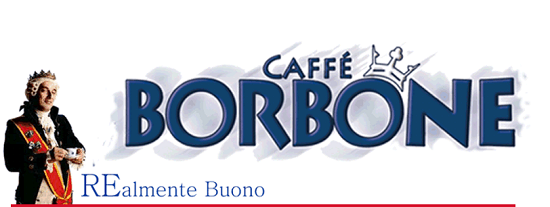By now, the goodness of Caffè Borbone coffee is absolutely taken for granted, the result of years of experience in the industry. Caffè Borbone coffee in capsules or pods has absolutely unique blends with a harmonious gunto and unforgettable aroma.
An identical taste in every city from the Caffè Borbone coffee in Palermo to that sipped in northern Italy. A perfect blend of arabica and robusta that combined in absolutely different percentages configure an Italian espresso with a balanced taste and fragrance.
Behind so much profession and experience, with the goodness of the coffee used as the basis, it should be remembered that among the reasons for success is definitely the production process, which spent in other coffee houses is underestimated.
Caffè Borbone coffee can be used on divese coffee machines but the advice, in order to taste it at its best, is to choose a Didiesse Frog coffee machine.

Caffè Borbone the composition of the blends
Each coffee blend, whether in borbone capsules or borbone pods, is the result of a mix of coffee varieties and combinations put together. Behind the choice of combining multiple blends together are two main reasons:
- the final product is of sublime and exclusive quality resulting from the combination of different blends whose taste is also the result of the variability of each crop, which changes from year to year. Each blend succeeds in enhancing the merits of its own coffee beans in fact giving a unique and special taste to the final product Through blending, acting in the mix of the different varieties, the quality of the finished product can be kept constant;
- the proper blending of different coffees, based on the characteristics of each coffee in terms of quality, taste, body, and aroma, give the borbone house the ability to put valuable blends on the mercao that are difficult even to copy by industry competitors.
There are several varieties of coffee species in nature, but mainly they can be divided into four main categories:
Natural Arabica
: blended by a sweet coffee taste, evident body and balanced aroma;
Washed Arabica
: blended from a sour coffee taste, delicate body and very aromatic fragrance;
Natural Robusta
: blend, compared to the previous two, with a very strong taste, pronounced body and woody aroma;
Washed Robusta
: blended, as in the case of “natural robusta,” with a very strong taste, medium body, and chocolaty aroma.
Step 1 – The mixing of coffee
Step 1, mixing, actually depending on the size of the grains, can occur at two separate times. Nel caso di presenza di chicchi di caffè dalle dimensioni omogenee la miscelzione può avvenire prima della tostatura, in tutti gli altri casi di presenza di chicci di caffè non omogenei in termini di dimensione la miscelazione aviene dopo la torrefazione.
It is precisely in the case of inhomogeneous coffee beans that the tendency is to roast the coffee individually, leaving out the blending that always occurs at a later stage.
Thanks to the roasting stage, the green beans are transformed into coffee beans, which followed by a grinding stage lead to the final product: the Caffè Borbone espresso powder in the different variants on the market.
Step 2 – Roasting Coffee
Surely you have noticed that the color of coffee and its final taste vary from coffee to coffee: underlying the difference in color and taste is the roasting mode.
Using fine raw materials is not synonymous with having perfect coffee: in fact, it is essential, beyond the use of quality raw materials, to know how to roast coffee. Among the different stages of production precisely that of roasting is the most delicate and complex process. Behind the importance of this stage, suffice it to say that the final fruit will be the one that gives coffee the typical aroma and classic color that differentiates it from all other caspule and pod coffee blends.

A roasting that must necessarily be done slowly in order not to damage the grain and make the cooking homogeneous, with the aim of not damaging the aromatic, organoleptic and nutritional properties.
Being in a hurry and performing a faster roasting could lead to the burning of the bean as well as the association of a very unpleasant taste and aftertaste (even burnt).
Underlying the production of Caffè Borbone coffee is the fact that they also want to respect the classic tradition of Campanian, Neapolitan coffee.
Step 3 – The cooling of the coffee
Unlike the roasting stage, stage 3, the cooling of the coffee, must be done quickly in order to promote internal condensation of aromatic substances: cooling is done through the use of air so as not to create moisture problems on the coffee beans.
It should be considered that the air-cooling process has higher costs than the water-cooling process, but in Borbone’s house this is not a problem because the goal remains to put quality and exclusive coffee on the market.
In the final stage, the coffee is allowed to “rest” in a temperature-controlled environment.
This is how Borbone coffee blends achieve that hint of real goodness that distinguishes them from all other blends on the market.




Visita il nostro e-shop e scopri tanti prodotti a prezzi vantaggiosi!